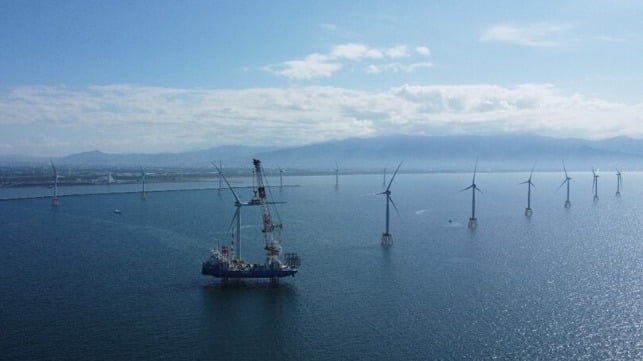Japan Proposes Changes in Wind Energy Terms as Mitsubishi Withdraws

The Japanese government is looking for means to revitalize its lagging efforts to develop offshore wind energy. The move comes as Mitsubishi, which in a consortium had won the first large auction, confirmed it has decided not to proceed with three wind farms.
Japan’s offshore wind energy sector has been slow to start and faces significant challenges due to the offshore topography. There are limited near-shore positions for fixed-bottom wind turbines. To achieve the government’s goals of 45 GW by 2040, the industry will have to develop floating wind technology. To date, Japan has developed only a few small near-shore wind farms with a total installed capacity of approximately 300 MW.
The consortium with Mitsubishi won in December the first large-scale auctions that consisted of three offshore sites near Akita on the northwest of Honshu in the Sea of Japan and Chiba, which is approximately 25 miles from Tokyo. The two sites on the Sea of Japan called for 819 MW and 478.8 MW, while the site near Tokyo would have been 390 MW, and all were fixed-bottom projects. Work was expected to start this year and next, and collectively they called for nearly 1.7 GW.
Mitsubishi announced a review of the projects in February, citing increasing costs and changed economics, while reporting it would record a $354 million charge. The company, however, initially denied media reports earlier this week that indicated that the projects were being canceled. However, in a statement issued on August 27, Mitsubishi confirmed it has decided not to proceed with the development of the projects.
The company said that the business environment for offshore wind power has changed worldwide due to factors such as tight supply, inflation, exchange rates, and rising interest rates, since the pandemic and the Ukraine crisis. It called the changes unexpected and said that while it continues to recognize the role of renewable energy, it would not be proceeding with the three projects. The group was involved in the manufacture of wind turbine generators since 1982, but sold its joint venture to Vestas in 2020.
“To adapt to these unexpected changes, we have been pursuing various options, including reassessment of costs, project schedule, and revenue. However, after discussions among the partners, we have determined that establishing a viable business plan is not feasible given the current conditions,” the company said in its statement.
Japan’s Minister of Economy, Trade, and Industry, Yoji Muto, called the decision “deeply regrettable.” He said it would undermine trust in the industry.
The Ministry, along with the Ministry of Land, Infrastructure, Transport and Tourism, had just completed an expert panel review of the industry. It submitted a proposal to the government calling for revising the terms of the leases, adding a provision so that companies could apply for an additional 10 years. The leases in the first three rounds of auctions in Japan provided a 30-year total term and required removal and rebidding at the end of the term. Experts point out that companies would have approximately 20 years of operation after the time required for permitting and construction.
The panel said adding 10 years would give companies more time to improve cash flow, increase electricity sales, and provide for earlier capital recovery. They believe this will also attract a broader range of investors. They proposed changing the terms for future auctions, but did not address making the provision for the 10-year extension available for the existing leases.
The ministry said it plans to restage the auctions for the leases that Mitsubishi is not proceeding with.
In Europe, they have also begun to extend wind leases. Denmark in June issued the first extension for an offshore wind lease. It followed with two more agreements later that same month, also highlighting that the extended term would improve the economics of some of its oldest operating wind farms while also maintaining the flow of renewable energy.
